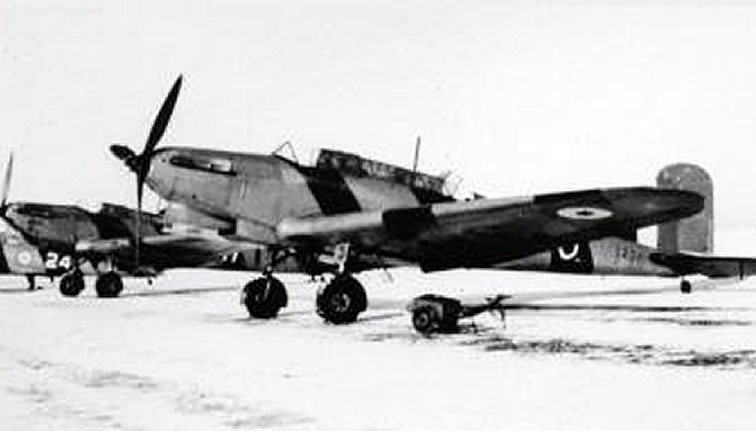No. 3 Bombing and Gunnery School, Fairey Battle Aircraft
Previous | Home | Next (Scroll down for more information)This image of a Fairey Battle plane was taken in 1940 at No. 3 Manning Depot, Edmonton, Alberta. It is provided courtesy of the Commonwealth Air Training Plan Museum located in Brandon, Manitoba. It is the only museum in the world, dedicated solely to those who trained under the British Commonwealth Air Training Plan. Click here to visit their informative site.
Scroll down to see another image and more information on flying the Fairey Battle.
This image above of a Fairey Battle Aircraft was created by Malcolm Clarke and can be found at www.abpic.co.uk. Mr. Clarke has contributed over 3400 images to this excellent site, which is devoted to aircraft in Great Britain. The crew may have flown on Fairey Battle Aircraft at No. 24 Honeybourne, Warwickshire, England, however, since the crew started operational flights late in the war, unless the Fairey Battle at Honeybourne was used for training, it is more likely the crew flew this aircraft in Canada, as part of their training, as noted in Wikipedia below..
The Fairey Battle was a British single-engine bomber built byFairey Aviation Company in the late 1930s for the RAF. The Battle was weighed down with a three-man crew and a bomb load, which made it slow, limited in range and highly vulnerable to attack. The Fairey Battle sustained terrible casualties and was eventually pulled from the front lines, in 1941. While the Fairey Battle was no longer used as a combat aircraft, its benign handling characteristics made it an ideal platform as a trainer. From August 1939, 739 Battles were stationed in Canada as trainers in the British Commonwealth Air Training Plan. Most were used for bombing and gunnery training with a small number equipped as target tugs. Some aircraft had the rear cockpit replaced with a Bristol turret for turret-gunnery training. Source: Wikipedia, Click here for more excellent info from Wiki on the Fairey Battle.
The "bullseye" or roundel on the side of the aircraft was painted on the aircraft for identification purposes to enable crew to differentiate their planes from enemy planes, and is based on the Red, White and Blue colors in the respective flags. The yellow border was to improve contrast. For more information on roundels consult http://cocardes.monde.online.fr/v2html/en/pays/royaume_uni.html

